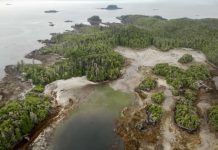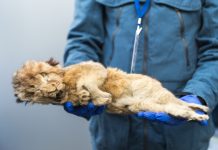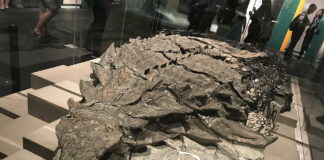The incredible find was about three or four years old when it died at least 20,000 years ago.

It is the best preserved juvenile woolly rhino ever found, with a lot of its internal organs – including its hazel-colored hair, intestines, lumps of fat and tissues – kept intact for thousands of years by permafrost.
The Ice Age creature was discovered in the thawing permafrost in the Yakutia region in Russia’s extreme north in August. It is thought to be the best-preserved woolly rhino found there yet.
“The young rhino was between three and four years old and lived separately from its mother when it died, most likely by drowning,” Dr Valery Plotnikov from the Academy of Sciences of the Republic of Sakha (Yakutia), who made the first description of the find, told the Siberian Times.
“The [sex] of the animal is still unknown. We are waiting for the radiocarbon analyses to define when it lived; the most likely range of dates is between 20,000 and 50,000 years ago.”
The perfectly preserved rhino was discovered not far from another recent significant find: Sasha, the world’s only baby woolly rhino ever found, discovered in 2014. Sasha, which has striking strawberry blond fur, has been dated to 34,000 years old.
According to Dr Plotnikov, the newly found specimen has a “very thick short underfur”. Sasha had helped scientists prove that woolly rhinoceroses were covered in thick hair – something only suggested by cave paintings before. The new find has added to evidence that woolly rhinos were fully adapted to the cold climate at a young age.

Currently, the Ice Age relic is still in Yakutia, as ice roads have to be formed before it can be transferred to the region’s capital, Yakutsk, to be studied by scientists.









